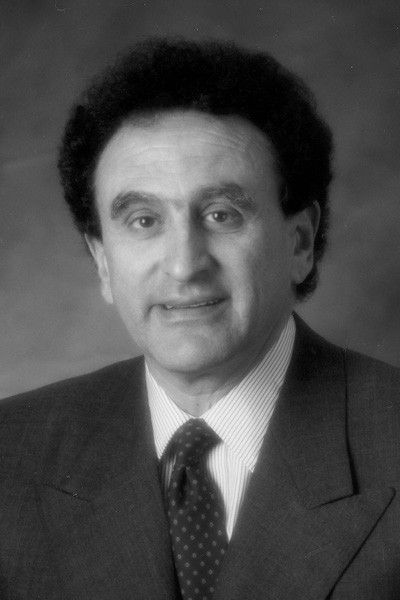C. Andre T. Salama received the B.A.Sc. (Hons), M.A.Sc. and Ph.D. degrees, all in Electrical Engineering from the University of British Columbia in 1961,1962 and 1966 respectively.
From 1962 to 1963, he served as a research assistant in the Electrical and Computer Engineering Department at the University of California, Berkeley. From 1966 to 1967 he was employed at Bell Northern Research, Ottawa, as a member of scientific staff working in the area of integrated circuit design. Since 1967 he has been on the staff of the Department of Electrical and Computer Engineering at the University of Toronto where he held the J.M.Ham Chair in Microelectronics (1987-1997), funded by Nortel Networks and NSERC. In 1992, he was appointed University Professor for scholarly achievements and pre-eminence in the field of microelectronics. In 2004, he was appointed University Professor Emeritus and won NSErC’s prestigious Award of Excellence.
During his tenure at the University, he made fundamental and internationally recognized contributions in the area of semiconductor device research as well as in analog and digital microchip design for applications in telecom and computer systems. These contributions are documented in over 340 refereed publications and16 patents and resulted in the training of 33 Ph.D’s , 86 M.A.Sc’s and 34 Post-Doctoral Fellows. Most of these researchers are now in senior managerial positions in industry or in professorial positions at universities in Canada, the United States, Japan, Ireland, France, Hong Kong and China.
By recognizing the fundamental importance of interaction with industry, and in conjunction with his graduate students, he insured that his contributions to the design, development and implementation of novel microelectronics devices and integrated circuits were transferred to industry. These contributions have had an impact on micropower device and circuit design, power semiconductor device and high voltage IC design, heterojunction bipolar and MOS transistors design, CMOS current mode analog IC design, CMOS/BICMOS high speed logic and GaAs dynamic logic design.
Throughout his career, he was actively involved in the promotion and management of research activity in Canada. He was the scientific director of, and a principal investigator in Micronet (1990-2005 ): a network of centre of excellence focussing on research in microelectronic devices, circuits and systems. Micronet was funded by NSERC and industry and involved 20 universities working in close cooperation with 49 industrial corporations. Micronet contributed over $60M to microelectronics research in Canada.

